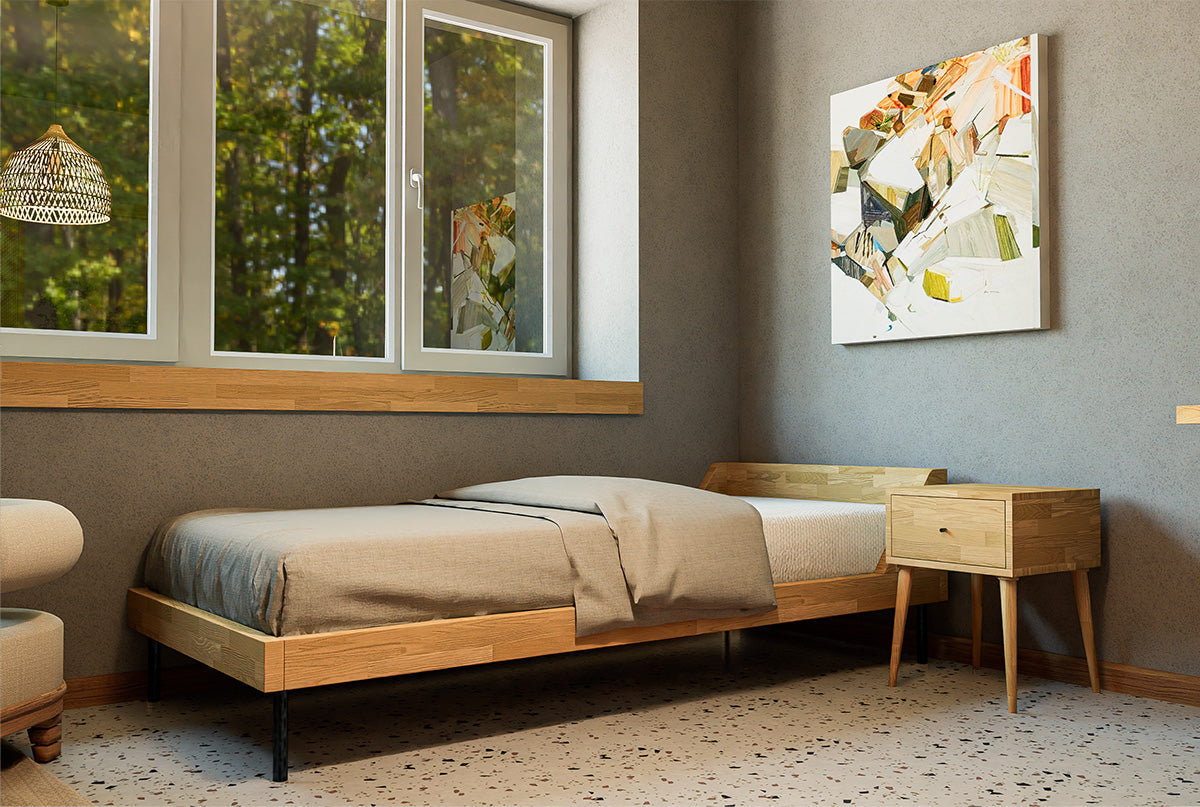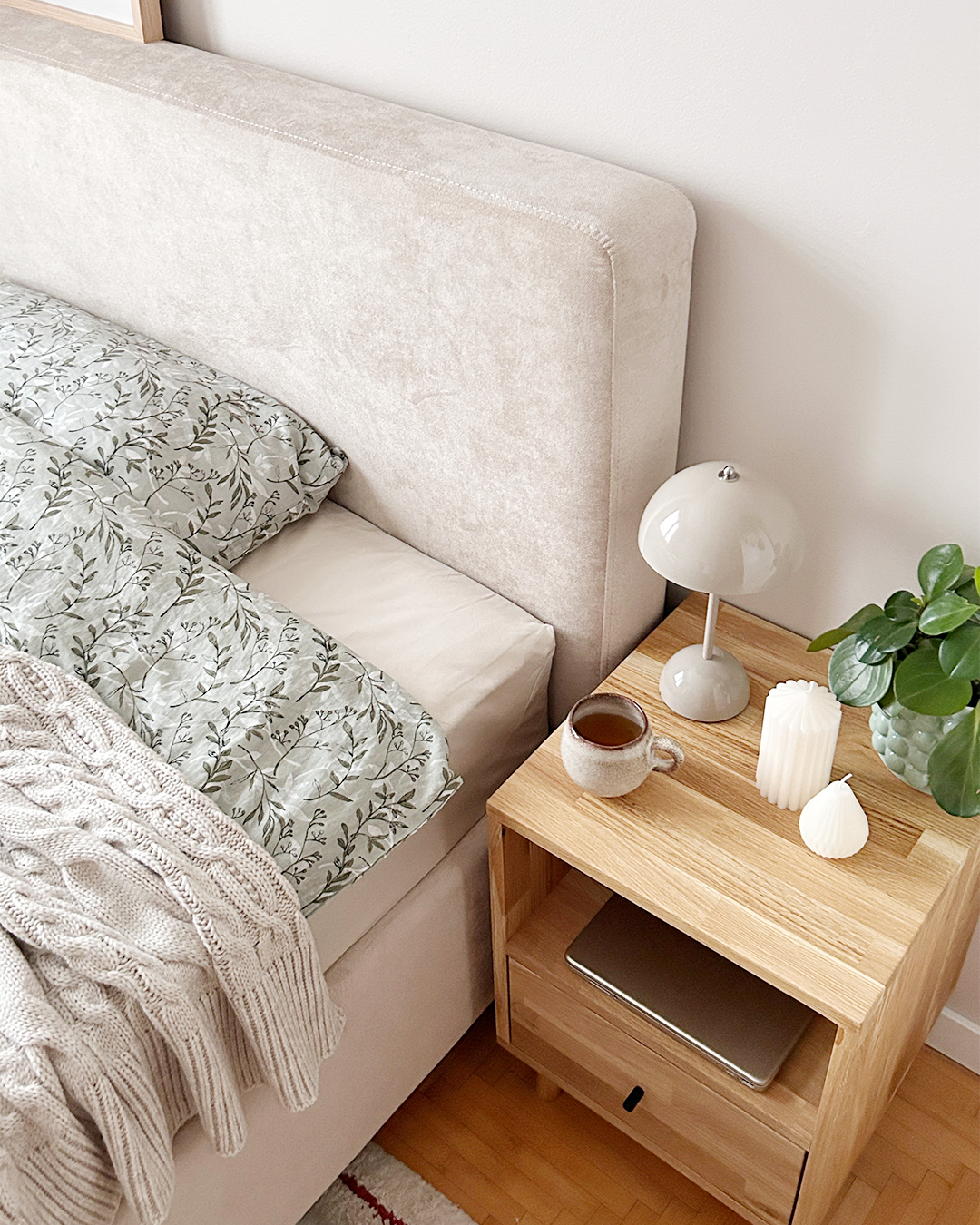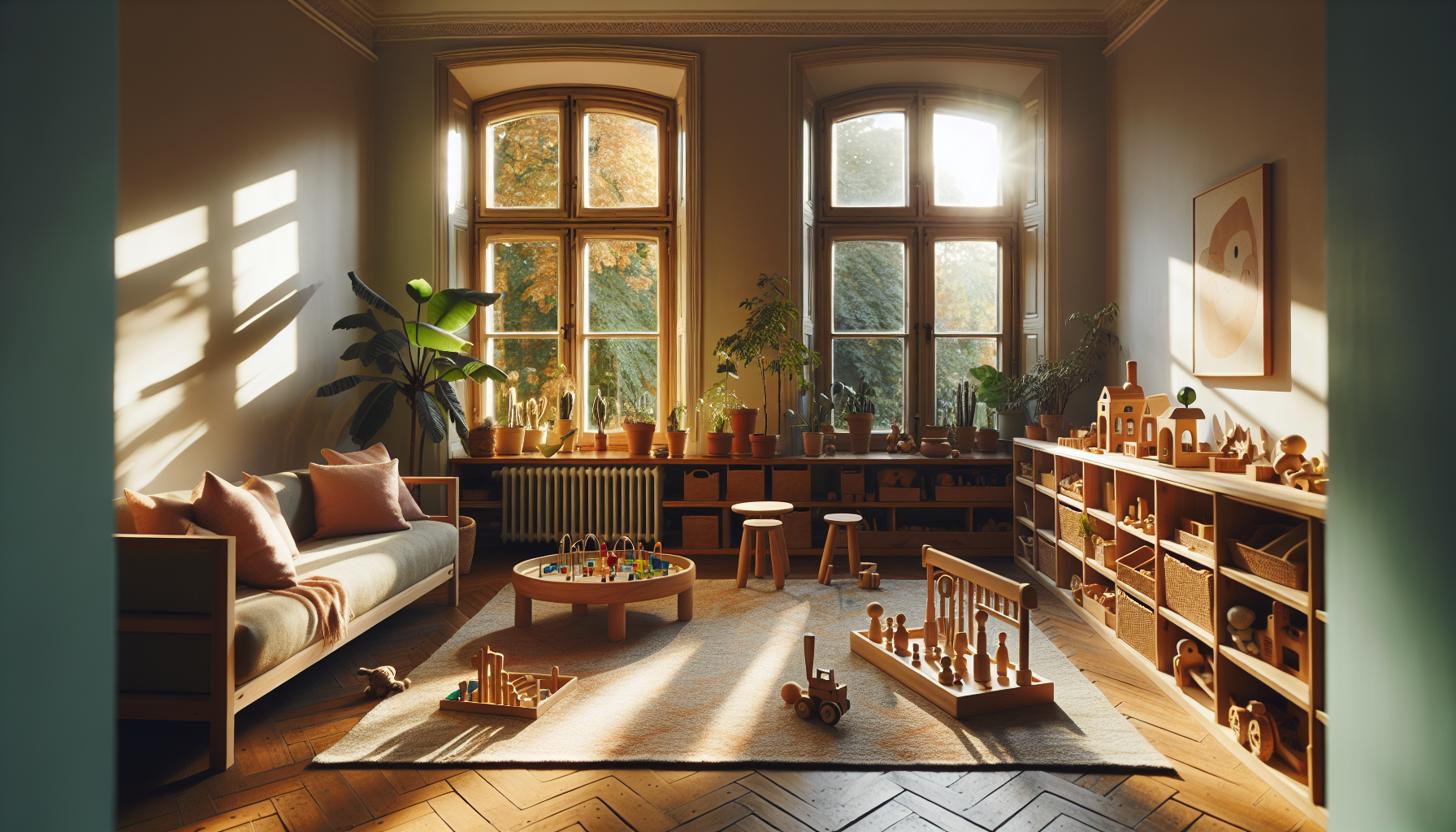Creating a Montessori room: Practical design tips for parents
A Montessori room is more than just space - it is an environment that shapes your child's development every day. In this article, we present specific ways to design a room that supports a toddler's independence, encourages discovery and focuses on safety, simplicity and naturalness.

The most important information
-
Children's safety, freedom of movement and promotion of independence should be ensured in accordance with the principles of Montessori pedagogy, preferring simple furniture and natural materials.
-
Maintaining order by limiting the number of toys, rotating items and labeling allows for better organization and stimulates the child's development.
-
A Montessori room should be adapted to the child's age group, taking into account appropriate lighting, colors and functional use of even small spaces.
Montessori Key Room Rules
Knowledge about Maria Montessori pedagogy and Montessori philosophy is fundamental to creating a space that will support your child's development. In a house inspired by Montessori pedagogy, the most important rule is safety. In a Montessori room you should:
-
avoid heavy, glass and dangerous objects
-
protect sharp edges of furniture
-
attach large furniture to the wall, which increases the safety of the child's play space.
The second principle is freedom of movement. The room should be barrier-free, allowing the child to have free access to furniture, toys and accessories, supporting his or her independent exploration. It is also worth remembering about simplicity and order. Natural materials such as wood or cotton are preferred due to their high quality and durability.

Last but not least is the promotion of self-reliance. Adapting the space so that everything is accessible to the child, while maintaining simplicity and order, is the key to success.
Functional zones in a Montessori room
The next step in the process of creating a Montessori room is dividing the space into functional zones. Depending on the child's needs, we can allocate a place for:
-
fun
-
art works
-
drawing
-
coloring
-
science
-
dressing up
-
rest.
Accessibility of objects at the appropriate height is crucial in a Montessori room. The child should have free access to toys and educational materials, which will enable him to use them independently. This solution not only makes it easier for the child to move around the room, but also helps him understand that it is his space.
Remember that functional zones do not have to be separated by walls or curtains. A well-thought-out organization of furniture and objects is enough to arrange a child's room, create a space that will support the child's development, and at the same time maintain harmony and order in the room.
Selection of appropriate furniture
Choosing the right furniture for a child's room is another challenge. Montessori furniture should be:
-
simple in design
-
neutral in color
-
promote the holistic development of the child by taking into account his or her cognitive, emotional, social and physical needs.
It is worth paying attention to low furniture, accessible for children. They enable the child to lie down and stand up independently, or comfortably reach and use objects.
Remember that the furniture should be adapted to the child's body structure and needs, which makes everyday tasks easier and supports the development of independence.
Natural materials and decorations inspired by nature

Natural materials and decorations inspired by nature are another element characteristic of a Montessori room. The use of natural materials such as:
-
Flax
-
Cotton
-
Wool
-
Rattan
These materials are safe, durable and support the development of the child's creativity.
Nature-inspired decorations have many benefits, such as:
-
They reduce the level of stress and mental fatigue
-
They engage the child's imagination
-
They improve your mood
-
They have a positive effect on the oxygen level and air freshness in the room
Real plants and garden elements such as trees, flowers and herb gardens are perfect examples of nature-inspired decorations.
In addition, colors, patterns and textures inspired by nature, such as shades of cream and beige, fractals, and bamboo and stone materials, help create a calm and harmonious environment that contributes to better sleep and is soothing to the baby's senses.
Organization of toys and educational materials
Organizing toys and educational materials is key to keeping your Montessori room tidy. Reducing the number of toys exposed to view and creating a rotation system helps maintain order and increases the child's interest in available toys.
Using transparent containers, baskets and low shelves ensures your child can see the contents and have easy access, encouraging independence and orderliness. Common objects adapted to the child's needs are crucial for his or her development.

Educational materials such as books or puzzles should be placed in the learning zone, at an appropriate height, to stimulate development and encourage independent learning.
Learning to clean through play, consistently pointing out where toys are and playing music while cleaning can make your child more willing to do this activity.
Finally, it is worth mentioning labeling places for toys, which helps develop the child's ability to recognize where individual elements should be located, which makes organizing the space easier.
Montessori room lighting and colors

Lighting and colors are other aspects worth considering when creating a Montessori room. Intuitive color selection avoids assigning colors to gender and prefers subdued base colors with contrasting accessories.
In a children's room for babies, the colors should be light, pastel and adjusted to natural daylight so as not to strain the baby's eyes. It is also worth ensuring adequate lighting in the parents' bedroom to ensure comfort and peace while caring for the child.
In turn, appropriate lighting is crucial to creating a friendly atmosphere. The light should be bright but not blinding, and preferably natural. If this is not possible, it is worth investing in good quality lighting that does not strain the eyes and creates a cozy atmosphere.
Supporting the child's independence
One of the main goals of the Montessori method is to support the child's independence. Understanding that a child is capable of performing many activities independently is crucial in the child's education process.
In a Montessori room, it is important to create a space that will enable the child to independently perform everyday activities. Creating a dedicated changing area with an easily accessible wardrobe helps the child develop independence.
Teaching a child to dress independently through play, grading the difficulty and encouraging him or her to imitate adults are effective methods to support his or her development, especially in the first months of life. In this process, the child also learns patience and concentration, which contributes to the child's proper growth.
Here are some ways to do it:
-
Choosing clothes with large buttons, snaps or Velcro
-
Encouraging your child to choose them themselves
-
Strengthening the child's self-confidence and self-esteem
Montessori room for different age groups
Both infants and preschoolers have different needs, so the arrangement of a Montessori room should be adapted to the child's age. A Montessori room for babies should have furniture and decorations installed low, which allows children easy access and promotes their independence. A Montessori bed for babies should be low to enable the child to get up and down independently, which can be done by placing the mattress directly on the floor.
Low shelves with toys placed in baskets allow babies to independently choose items to play with. Baby clothes should be easily accessible, preferably in lower drawers, to support older babies' independence in choosing clothes.
When arranging a Montessori room for preschoolers, special emphasis should be placed on safety: avoid glass and heavy objects and protect sharp edges. Preschoolers require access to furniture, toys and accessories that allow them to explore independently, which can be provided by low shelves and desks.
Adaptation of the Montessori method in small spaces
The Montessori method is flexible and can be adapted to various conditions, including small spaces. In such a case, in order to make the most of the available space, it is worth limiting the number of toys and decorations, which will provide the child with more space for free exploration.
Remember that even a small space can be functional and full of inspiration for a child. It all depends on proper planning and use of available solutions.
Despite the limitations, using the Montessori method in small spaces is possible and can bring many benefits to the child's development. Regardless of the size of the room, the most important thing is that it is a space where the child feels safe and comfortable.
Summary
To sum up, a Montessori room is a space that supports a child's independence, creativity and natural development. It is based on simplicity, natural materials, and adaptation to the child's needs and age. Regardless of the size of the room, applying Montessori principles can bring invaluable benefits to your children. Remember that every child is different and what works for one may not work for another. Therefore, the most important thing is to observe and adapt the room to the individual needs of your child.
Frequently Asked Questions
What is the Montessori method?
The Montessori method involves the individual development of the child in accordance with his or her own development plans, based on his or her capabilities, competences and skills, to enable independent and effective learning.
How to arrange a Montessori room?
In a Montessori room, you should choose furniture and toys made of natural materials and maintain order and arrangement. Maintaining cleanliness is also important.
What is the difference between a Montessori school and a regular school?
A Montessori school differs from a regular school by taking a holistic approach to the development of students and placing greater emphasis on the development of practical skills. A child in a Montessori school increases not only substantive knowledge, but also skills useful in adult life.
From what age does Montessori start?
The Montessori method is dedicated to children of preschool age, i.e. from about 2.5 to 6 years old. You can also introduce Montessori activities from the first weeks of your child's life.










